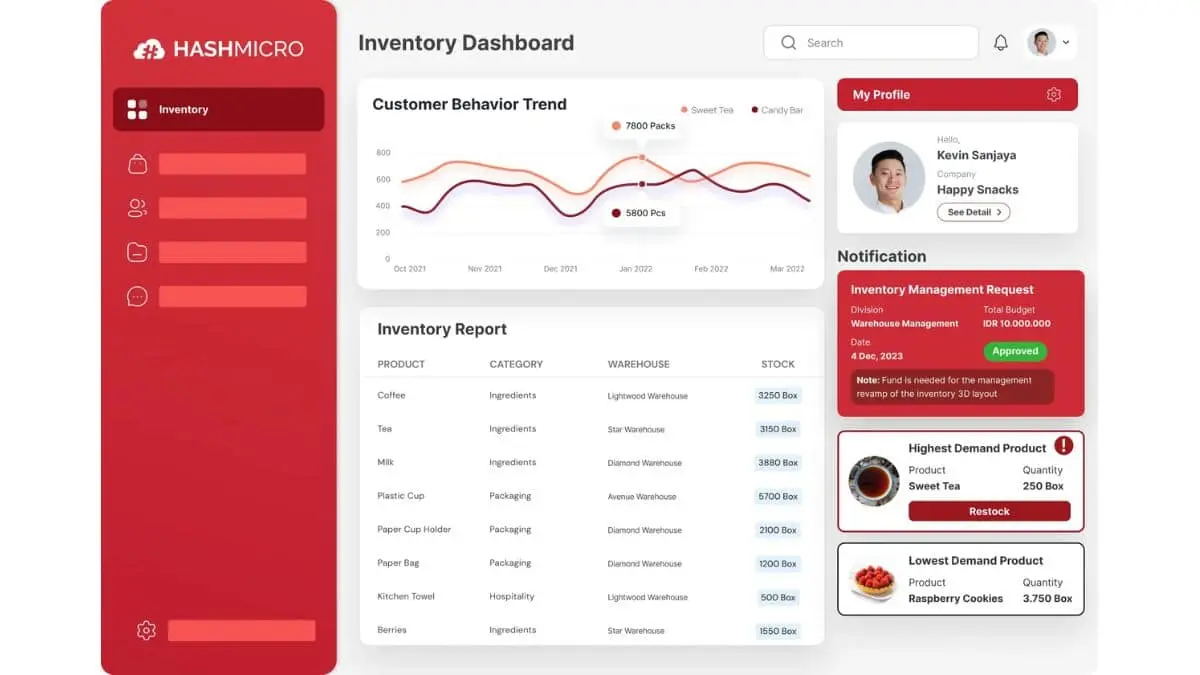Hello! Ensuring accurate inventory management is crucial for any business in the Philippines looking to thrive and maintain profitability. Proper inventory tracking allows you to avoid the common issues of stock shortages or excess, which can significantly impact your operations and bottom line.
In this guide, we will explore why precise inventory control is more important than you might realize. I’ll also walk you through some effective strategies for maintaining accuracy in your stock management, helping you reduce inefficiencies, minimize stress, and enhance your overall business performance. Let’s get started!
Key Takeaways
|
Table of Contents

What is Inventory Accuracy?

Inventory accuracy refers to the degree to which your physical stock matches the records in your inventory management system. It’s a crucial component of business operations, influencing everything from customer satisfaction to financial reports.
When your physical inventory and your electronic records align perfectly, you have achieved high inventory accuracy. This alignment ensures that the data you rely on to make business decisions is both reliable and actionable.
The distinction between real inventory and electronic records is fundamental. Real inventory consists of the actual items available in your store or warehouse, while electronic records represent these items in your digital systems. Discrepancies between these can lead to significant challenges, including misinformed decision-making and potential losses in revenue.
Why is Inventory Accuracy Important?
Accurate inventory directly impacts customer satisfaction. When customers receive their products on time and as expected, trust builds, and loyalty grows. Conversely, inaccuracies can lead to missed sales opportunities and damaged reputations, as customers are quick to share their frustrations about stock issues.
Furthermore, maintaining precise inventory levels reduces both operational and holding costs, improving overall efficiency. Overstocking, for example, ties up capital in unsold goods, while understocking forces rushed orders at premium prices. Additionally, accurate inventory prevents shrinkage due to theft, damage, or errors, ensuring proper asset valuation for management and investor reporting.
Challenges in Maintaining Inventory Accuracy
For many Philippine e-commerce businesses, inventory inaccuracies arise from rapid sales cycles and the complexities of online order fulfillment. Common issues include inventory management mis-picks and improperly restocked returns. These challenges underscore the need for robust cloud inventory management practices and technologies to plan the demands of an online marketplace.
Poor inventory management systems and self-storing practices further exacerbate these inaccuracies. Systems that fail to integrate smoothly with other business processes or that do not update in real-time can lead to significant discrepancies. Likewise, inadequate storage methods may lead to damaged goods or misplacement, compounding the inaccuracies.
Remember, submitting an inventory list to the Bureau of Internal Revenue (BIR) is essential. Make sure your receipts and invoices adhere to the inventory list BIR guidelines.
How to Calculate Inventory Accuracy
Inventory accuracy is typically calculated using the formula:

This percentage reflects how well your physical stock matches up against your inventory records. Regular application of this formula can help you gauge the effectiveness of your inventory management practices.
Steps to maintain this accuracy include conducting regular physical counts of your inventory and validating these against your recorded data. Inventory valuation, an essential part of financial reporting, also relies on accurate, up-to-date inventory data to assess the total worth of your stock.
What is a Good Inventory Accuracy Rate?
A “good” inventory accuracy rate varies by industry but typically, rates above 97% are considered excellent. This standard ensures that businesses are operating efficiently with minimal disruptions due to inventory errors. Industry benchmarks provide a useful comparison tool, helping you understand where your business stands relative to peers and identifying areas for improvement.
Tips to Improve Inventory Accuracy
Improving inventory accuracy is crucial for maintaining efficient operations and safeguarding your business’s bottom line. Here are some effective strategies:
- Conduct Regular Inventory Counts: Implement cycle count programs to routinely verify physical stock, allowing you to identify and correct discrepancies quickly.
- Enhance Security Measures: Improve your storage methods to protect against loss, damage, and theft, ensuring more accurate inventory records.
- Upgrade Inventory Management Systems: Invest in advanced systems that provide real-time data and integrate smoothly with other business processes.
- Collaborate and Check Frequently: Work with reliable fulfillment partners and conduct frequent, randomized checks to prevent issues before they become problematic.
Adopting these tips will not only help in maintaining accurate inventory records but also in creating a more resilient and responsive business infrastructure. By ensuring inventory accuracy, you position your business for smoother operations and improved customer satisfaction.
Easy Accuracy Counting with HashMicro’s Software

Enhancing inventory accuracy is simpler with advanced solutions like HashMicro’s e-commerce inventory system, designed to meet the specific needs of modern e-commerce. Here are some features of HashMicro that align perfectly with making your job easier:
- Real-Time Inventory Updates: HashMicro’s software offers real-time tracking of stock levels, ensuring data is always current and reducing discrepancies between physical stock and records.
- Integrated Systems: The software seamlessly integrates with other business modules like sales, purchasing, and accounting, ensuring cohesive operations across all departments.
- Advanced Reporting Tools: With comprehensive reporting capabilities, businesses can make informed decisions quickly, addressing potential inventory issues before they escalate.
- Automated Stock Adjustments: HashMicro’s system automates stock adjustments for returns and mis-picks, streamlining processes and minimizing human error.
Implementing HashMicro’s inventory management software can significantly improve inventory accuracy, making it easier for businesses to manage stock levels effectively and maintain high customer satisfaction. By leveraging these advanced features, companies can overcome common inventory challenges and thrive in the market.
Conclusion
Maintaining high inventory accuracy is essential for businesses striving to stay competitive, particularly in the fast-paced e-commerce landscape. Accurate inventory management ensures that stock levels are always in sync with records, minimizing operational disruptions and boosting customer satisfaction.
Enhance your business operations and minimize inventory discrepancies with HashMicro’s robust inventory management solutions. Experience firsthand how our software can transform your inventory management processes. Sign up for a free demo today!
Frequently Asked Questions
-
How do you measure inventory accuracy?
Inventory accuracy is measured by comparing physical stock counts to the records in your inventory system. The accuracy percentage is calculated using the formula: (Accurate stock items / Total stock items) * 100%.
-
Why is inventory accuracy important?
This is critical as it ensures that stock levels meet customer demand without surplus. Accurate inventory prevents financial losses and enhances customer satisfaction by avoiding stockouts and overstock issues.
-
What is the goal of inventory accuracy?
The goal of inventory accuracy is to maintain a reliable record that mirrors the actual stock levels in real-time. This ensures efficient business operations, optimal stock levels, and accurate financial reporting.





































